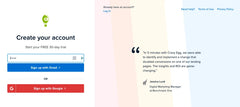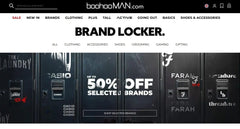
Target's Price-Matching Policy Ends: What It Means for Shoppers and Retailers
Table of Contents
- Key Highlights:
- Introduction
- The Evolution of Price Matching in Retail
- The Implications of Target's Decision
- Competitors and Market Trends
- Preparing for the Holiday Season
- The Risk of Alienating Consumers
- Consumer Trends and Expectations
- Conclusion: A New Era for Pricing Strategies
- FAQ
Key Highlights:
- Target will cease its policy of matching prices from competing retailers, effective July 28.
- The decision aims to enhance financial discipline as costs rise due to tariffs and prepares the company for a competitive holiday shopping season.
- Major retailers like Walmart, Costco, and Amazon do not match prices, raising concerns about maintaining customer trust and value perception.
Introduction
In a significant shift for consumers and the retail landscape, Target has announced the discontinuation of its price-matching policy, which allowed customers to receive the lowest prices by matching competitors' offers. This decision, set to take effect on July 28, 2025, comes at a time when retailers are navigating increased costs and heightened competition as the holiday shopping season approaches. With the list of retailers honoring price matches dwindling, this move marks a pivotal moment for Target and its customers, prompting discussions on pricing strategies and consumer expectations in an increasingly competitive market.
The Evolution of Price Matching in Retail
Price matching has traditionally been a strategy employed by retailers to attract price-sensitive consumers. By assuring customers that they would pay the lowest price available, stores like Target have leveraged this policy to enhance customer loyalty and foot traffic. However, as the retail landscape evolves, the effectiveness of such strategies is being called into question.
Target's initial price-matching policy allowed the retailer to compete with 27 e-commerce stores and local competitors, creating a perception of value that resonated with consumers. Yet, with the growing complexities of supply chain costs and tariff impacts, maintaining this policy has become increasingly challenging. As retail analyst Neil Saunders pointed out, the decision to end the policy reflects Target's need to be "financially disciplined" during a time when operational costs are on the rise.
The Implications of Target's Decision
Financial Flexibility and Profit Protection
Ending the price-matching policy provides Target with greater flexibility in its pricing strategies. Retailers are currently facing pressure from rising costs, particularly due to tariffs affecting imported goods. By eliminating the commitment to match competitor prices, Target can adjust its pricing without the constraints of having to honor lower prices offered by others.
This strategic pivot aligns Target with industry giants such as Walmart, Costco, and Amazon, which have long refrained from engaging in price-matching practices. In doing so, Target not only protects its profit margins but also positions itself to navigate the competitive landscape with a renewed focus on its unique value propositions, particularly as the holiday shopping season approaches.
Customer Reactions and Brand Trust
While the decision may benefit Target's financial strategy, it raises questions about customer trust and perceptions of value. Shoppers have come to rely on price-matching policies as a form of assurance that they are receiving fair prices. With the discontinuation of this feature, Target must work diligently to maintain customer loyalty and ensure that shoppers perceive its prices as competitive.
Historical context provides insight into how similar decisions have been received. For instance, Walmart faced backlash in 2019 when it discontinued its popular price-matching tool, which had allowed customers to receive refunds for price differences. The termination of such programs can lead to customer dissatisfaction and may drive shoppers to seek alternatives that offer better price assurances.
Competitors and Market Trends
As Target steps back from price matching, the practice remains prevalent among certain mid-tier retailers. Companies such as Best Buy, Dick's Sporting Goods, and Kohl's continue to offer some form of price-matching incentives, catering to consumers who prioritize price competitiveness.
Best Buy
Best Buy's price-matching policy includes a commitment to match prices from major retailers like Amazon, Costco, and Walmart on identical items. This approach positions Best Buy as a price-competitive option for electronics, attracting consumers who may have previously shopped at Target.
Dick's Sporting Goods
Dick's Sporting Goods has a robust price-matching policy that includes direct-to-consumer sales from popular brands like Nike and Under Armour. By offering a transparent price-matching option, Dick's is able to appeal to consumers in the sporting goods sector who are looking for the best deals.
Kohl's
Kohl's policy allows customers to match advertised prices from local retailers, although it does not extend to online pricing. This localized approach helps Kohl's maintain a competitive edge in specific markets while also allowing shoppers to utilize additional coupons or discounts.
Home Improvement Retailers
Home Depot and Lowe's also engage in price-matching, though the complexity of matching specific brands can create challenges for consumers. Each retailer's unique offerings can lead to discrepancies in price matching, making it essential for shoppers to be diligent in their comparisons.
Preparing for the Holiday Season
As Target eliminates its price-matching policy, the focus shifts to how the retailer will approach pricing during the upcoming holiday season. The holiday shopping frenzy is characterized by aggressive discounts and promotions as retailers vie for consumer dollars. In this environment, Target's decision to drop its price-matching policy could provide the company with the latitude to implement strategic pricing that aligns with its broader marketing initiatives.
Chris Walton, a former Target executive, emphasized that the move sets Target up for increased flexibility in its holiday pricing strategies. By not being bound by the need to match competitor prices, Target can explore innovative pricing tactics that may better resonate with consumers during the critical shopping period.
The Risk of Alienating Consumers
While the potential for increased pricing flexibility is a significant advantage, the decision to drop price matching carries risks. Target must navigate the delicate balance between maximizing profits and maintaining customer loyalty. Failing to offer competitive prices or perceived value could lead to customer attrition, particularly as consumers become more price-conscious in the face of economic uncertainty.
To mitigate these risks, Target should focus on enhancing its overall value proposition. This could involve improving customer service, offering exclusive promotions, or enhancing loyalty programs that reward repeat shoppers. By reinforcing the brand’s commitment to delivering value beyond price, Target can work to retain its customer base while adjusting its pricing strategies.
Consumer Trends and Expectations
The evolving retail landscape reflects changing consumer expectations and behaviors. Today's shoppers are increasingly informed and empowered, often conducting extensive research before making purchases. This trend underscores the importance of transparency in pricing and the need for retailers to adapt to consumer demands.
The Role of Technology
Digital tools and platforms have transformed the way consumers approach shopping. Price comparison websites and mobile applications empower consumers to seek out the best deals with ease. As a result, retailers must be vigilant in monitoring competitor prices and adjusting their strategies accordingly.
Furthermore, the rise of social media has amplified consumer voices. Customers are more likely to share their experiences and opinions about pricing practices, which can significantly impact a retailer's reputation. Maintaining a positive brand image and addressing customer concerns promptly will be crucial for Target as it navigates this transitional period.
Fostering Loyalty in a Competitive Environment
Building and maintaining customer loyalty requires a multifaceted approach. Retailers must focus on creating meaningful connections with their customers, emphasizing not only price but also quality, service, and convenience. Target has the opportunity to leverage its brand identity and community presence to foster loyalty among shoppers who value the in-store experience and personalized service.
Adapting to Economic Pressures
As economic pressures continue to influence consumer spending, retailers must be adaptable. The decision to drop price matching is a strategic response to the current economic climate, but it must be coupled with an understanding of consumer sentiment. Retailers that can empathize with their customers and provide solutions to their challenges will be better positioned to thrive in uncertain times.
Conclusion: A New Era for Pricing Strategies
Target's decision to end its price-matching policy marks a significant turning point for the retailer and the broader retail landscape. As the company seeks to enhance financial discipline and prepare for the challenges of the holiday season, it must also navigate the complexities of customer trust and perceptions of value. The evolving expectations of consumers, coupled with the competitive nature of the retail market, create both challenges and opportunities for Target.
In this new era of pricing strategies, Target has the chance to redefine its approach to value, loyalty, and consumer engagement. By focusing on creating a compelling shopping experience and reinforcing its commitment to quality, Target can position itself as a leader in the retail sector, even in the absence of a price-matching promise.
FAQ
Why is Target ending its price-matching policy? Target is discontinuing its price-matching policy to enhance financial discipline and flexibility in pricing strategies, particularly in light of rising costs and the competitive landscape ahead of the holiday shopping season.
What alternatives do consumers have for price matching? While Target will no longer match competitor prices, other retailers like Best Buy, Dick's Sporting Goods, and Kohl's continue to offer price-matching policies, providing options for consumers seeking competitive pricing.
How might this decision affect Target's customer base? The elimination of price matching may impact customer trust and perceptions of value. Target will need to work diligently to maintain loyalty by ensuring competitive prices and enhancing the overall shopping experience.
What strategies can Target implement to retain customers? Target can focus on improving customer service, offering exclusive promotions, and enhancing loyalty programs to reinforce its value proposition and retain customers despite the change in pricing policy.
Power your ecommerce with our weekly insights and updates!
Bleibe auf dem Laufenden über das, was in der Handelswelt passiert
E-Mail-Adresse
Für Sie ausgewählt

22 July 2025 / Blog
Target Ends Price Match Policy with Amazon and Walmart: What Shoppers Need to Know
Mehr erfahren
22 July 2025 / Blog
Maximizing Conversions: The Power of Free Trial Marketing Strategies
Mehr erfahren
22 July 2025 / Blog


